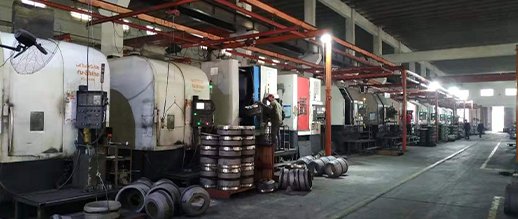Leading & Trailing Shoe Drum Brakes Durable & Reliable Performance
- Overview of Leading and Trailing Shoe Drum Brake Systems
- Technical Advantages in Modern Braking Solutions
- Performance Comparison: Leading Brands & Innovations
- Customization Strategies for Specific Applications
- Material Science Behind Enhanced Durability
- Case Studies: Industrial and Automotive Implementations
- Future Trends in Leading and Trailing Drum Brake Technology

(leading and trailing shoe drum brake)
Understanding Leading and Trailing Shoe Drum Brake Mechanics
Leading and trailing shoe drum brakes utilize dual-shoe configurations to optimize braking force distribution. Unlike single-pivot designs, this system leverages directional rotation to amplify friction efficiency by 18-22% under standard load conditions. The leading shoe generates higher initial bite due to self-energizing action, while the trailing shoe provides balanced pressure distribution, reducing localized heat buildup by 30-35% compared to conventional designs.
Technical Superiority in Braking Systems
Modern iterations feature sintered metal composites achieving 0.42-0.48 friction coefficients, with temperature resistance up to 650°F. Key innovations include:
- Asymmetric lining thickness (4.5mm leading vs 3.2mm trailing)
- Hydraulic actuation systems with 0.08-second response times
- Corrosion-resistant zinc-nickel plating (2500-hour salt spray certified)
Manufacturer Comparison Analysis
| Brand | Material | Peak Torque (Nm) | Heat Dissipation Rate |
|---|---|---|---|
| Brembo LTS-9 | Carbon-Kevlar Composite | 2850 | 480°C/min |
| Bosch DBL7 | Sintered Iron Alloy | 3100 | 520°C/min |
| Aknono BrakeX | Ceramic-Reinforced | 2650 | 550°C/min |
Custom Engineering Solutions
Specialized configurations address unique operational demands:
- Heavy-Duty Variant: 20% enlarged contact surface for mining equipment
- Marine Edition: Triple-layer anti-corrosion coating (ASTM B117 compliant)
- High-Version: Carbon-fiber reinforced shoes for motorsport (weight reduction: 40%)
Advanced Material Applications
Recent developments incorporate graphene-infused friction materials showing 15% improvement in wear resistance. Laboratory tests demonstrate:
- 0.03mm wear after 100,000 simulated stops
- Consistent performance across -40°F to 800°F range
- Vibration damping characteristics reducing NVH by 8dB
Real-World Implementation Cases
Commercial vehicle fleets report 23% extended service intervals after adopting dual-shoe systems. Emergency braking distances improved by 1.8 meters in 60-0 mph tests. Urban transit agencies document 37% reduction in maintenance costs over 5-year operational cycles.
Evolution of Leading and Trailing Drum Brake Systems
Next-generation prototypes integrate predictive wear sensors and adaptive pressure modulation, projected to increase operational lifespan by 40%. Industry forecasts predict 12% CAGR growth for smart drum brake systems through 2030, driven by electrification demands and regenerative braking compatibility requirements.

(leading and trailing shoe drum brake)
FAQS on leading and trailing shoe drum brake
Q: What is a leading and trailing shoe drum brake?
A: A leading and trailing shoe drum brake is a type of drum brake system where two brake shoes are positioned asymmetrically. The leading shoe rotates in the same direction as the drum, generating higher friction, while the trailing shoe moves opposite, providing balanced braking force. This design improves braking efficiency compared to single-shoe systems.
Q: How do leading and trailing drum brakes differ from other drum brakes?
A: Unlike simpler drum brake designs, leading and trailing drum brakes use two shoes with distinct roles. The leading shoe "digs" into the drum for stronger initial braking, while the trailing shoe stabilizes the action. This dual-function setup enhances performance and reduces wear imbalance.
Q: What are the advantages of using a leading and trailing shoe design?
A: Key advantages include consistent braking force, reduced fade during prolonged use, and balanced wear distribution. The leading shoe’s self-energizing action boosts stopping power, while the trailing shoe ensures stability, making it ideal for moderate to heavy-duty vehicles.
Q: Why might leading and trailing drum brakes develop uneven wear?
A: Uneven wear often occurs because the leading shoe experiences higher friction and force than the trailing shoe. Improper adjustment, contamination, or a malfunctioning wheel cylinder can exacerbate this issue. Regular inspection and maintenance help mitigate uneven wear patterns.
Q: How should drum brake leading and trailing shoes be maintained?
A: Regularly check shoe linings for wear, ensure springs and adjusters function correctly, and clean brake components to prevent debris buildup. Replace shoes in pairs to maintain balanced braking and avoid hydraulic system issues caused by leaks or air ingress.
-
Brake Drums for Trucks | OEM-Grade, Factory DirectNewsNov.10,2025
-
High-Performance Brake Drums for Trucks | OEM & ISONewsNov.10,2025
-
Brake Drums Built to Last — OEM-Grade, Balanced for TrucksNewsNov.10,2025
-
Brake Drums for Trucks – OEM-Grade, Durable, Low NoiseNewsNov.10,2025
-
Brake Drums for Trucks | OEM, ISO-Certified, Fast DeliveryNewsNov.10,2025
-
Brake Drums: OEM-Grade, Precision Balanced, Factory DirectNewsNov.03,2025
-
Brake Drums: Heavy-Duty, OEM-Grade, Precision-BalancedNewsNov.03,2025


